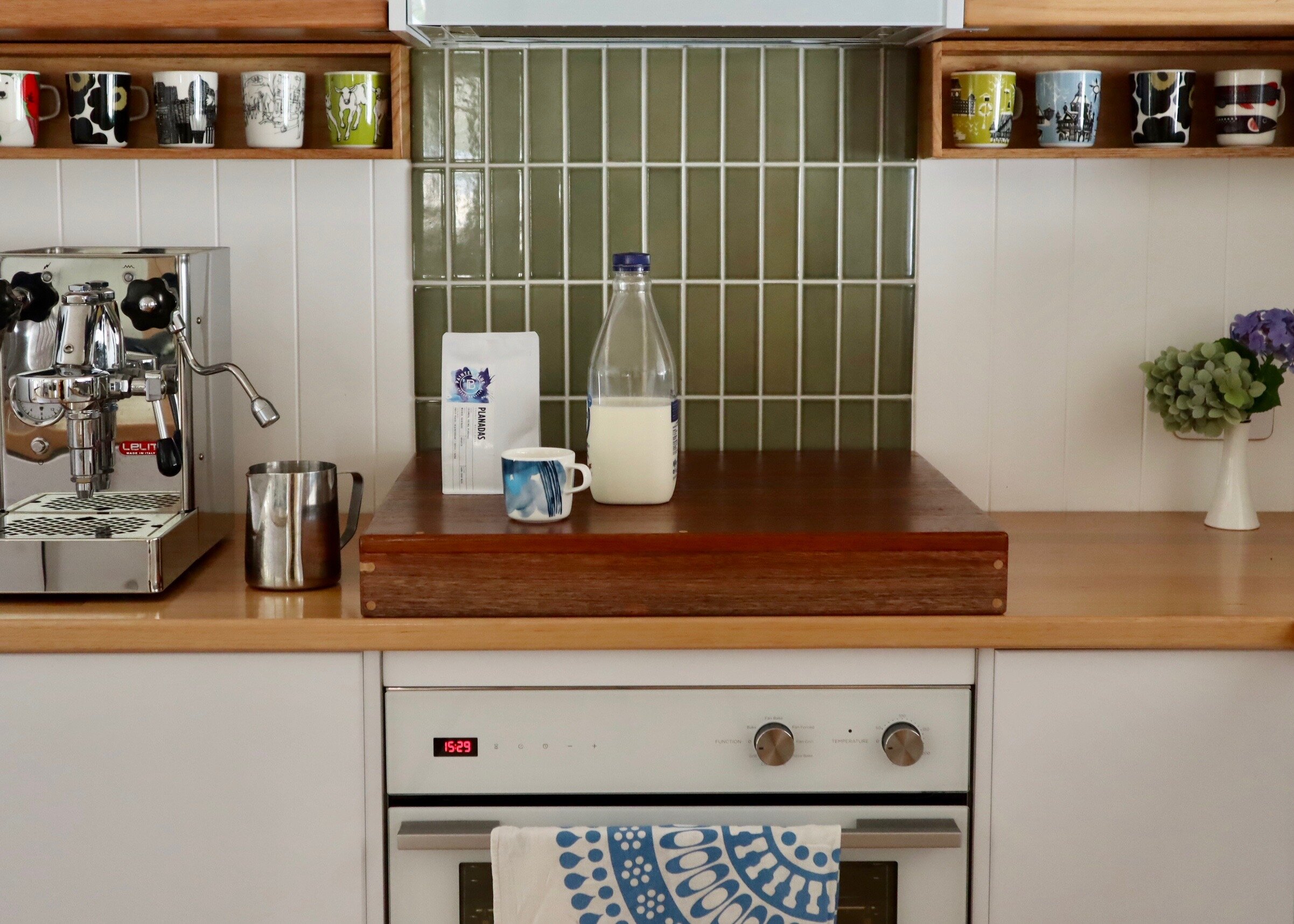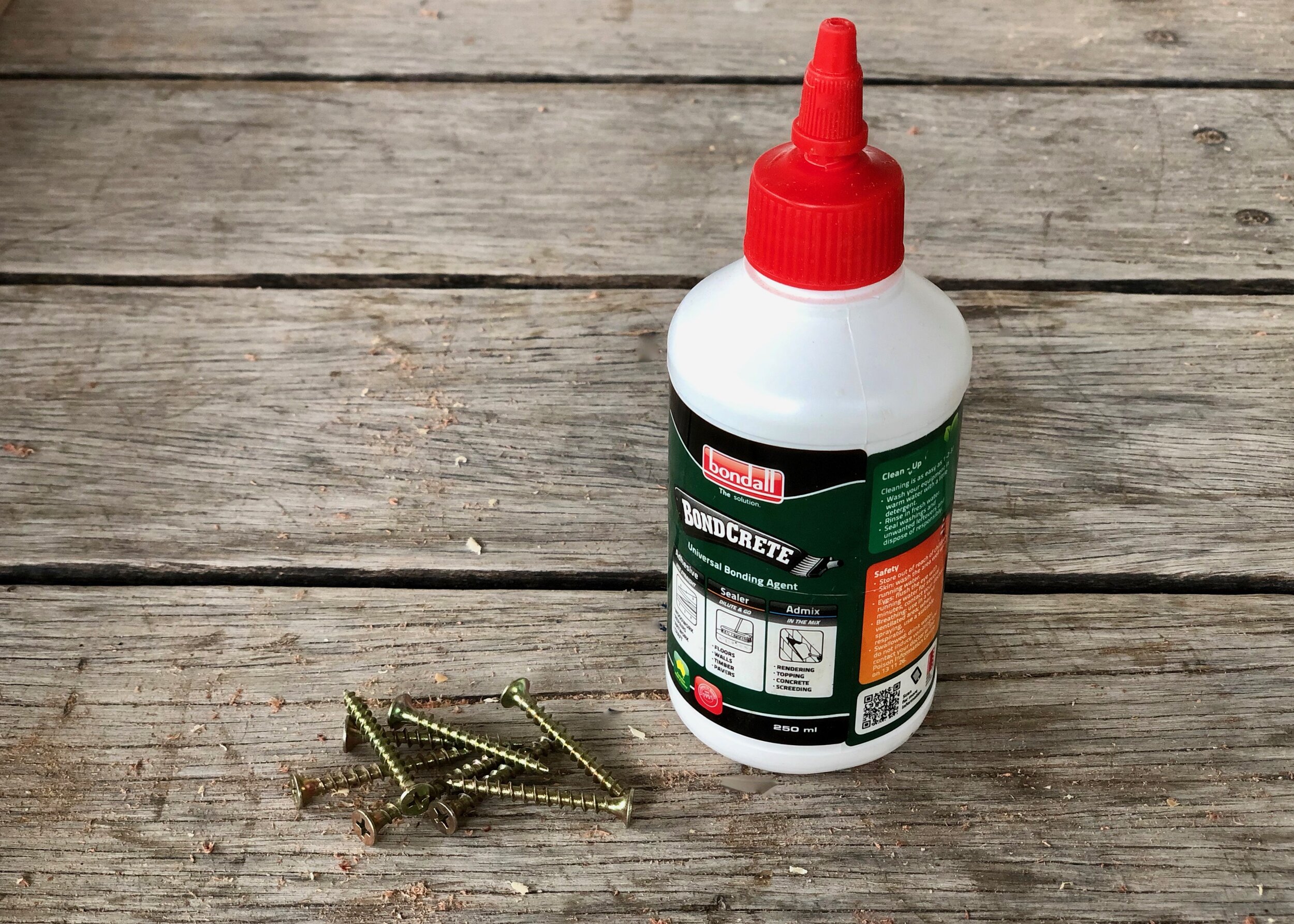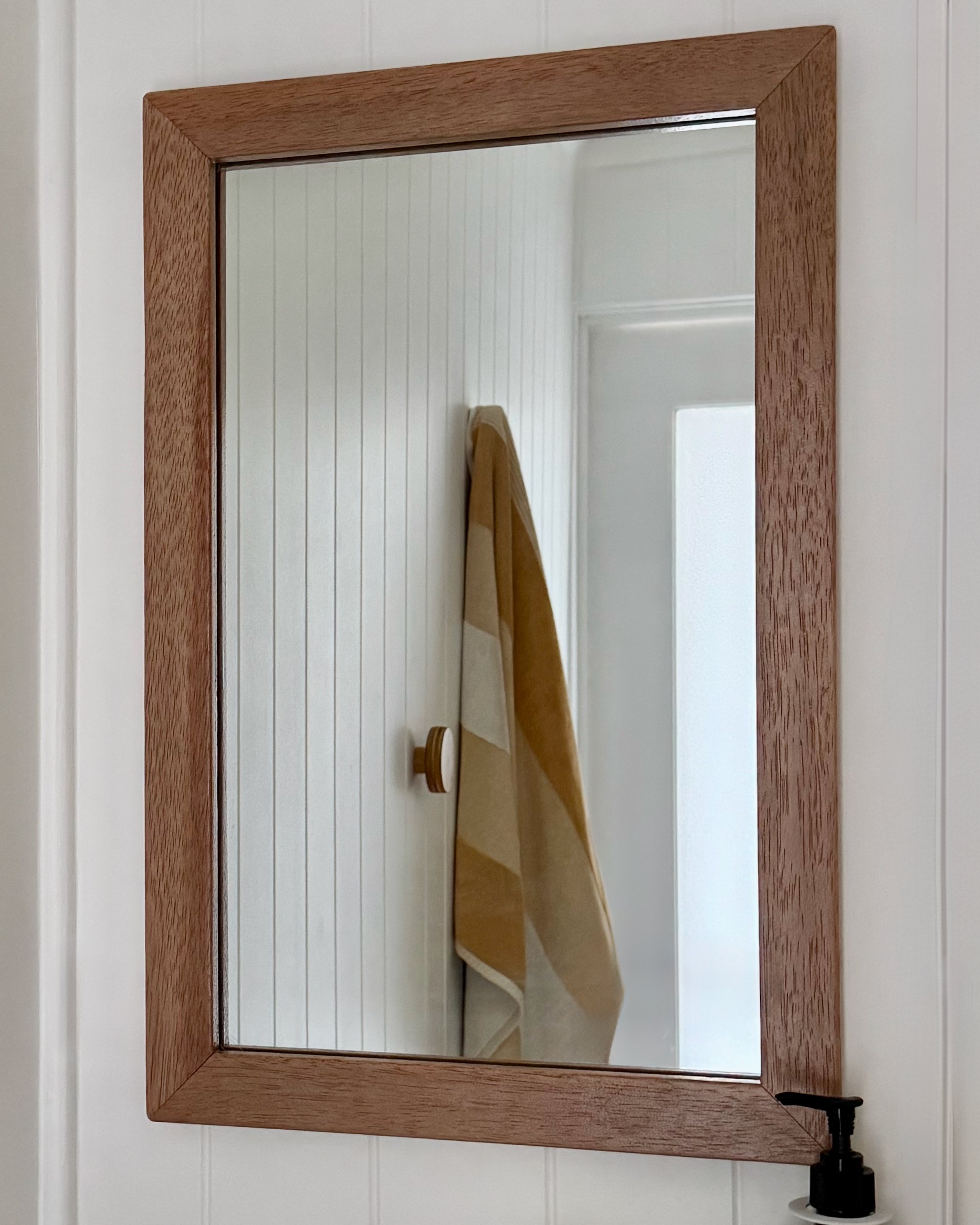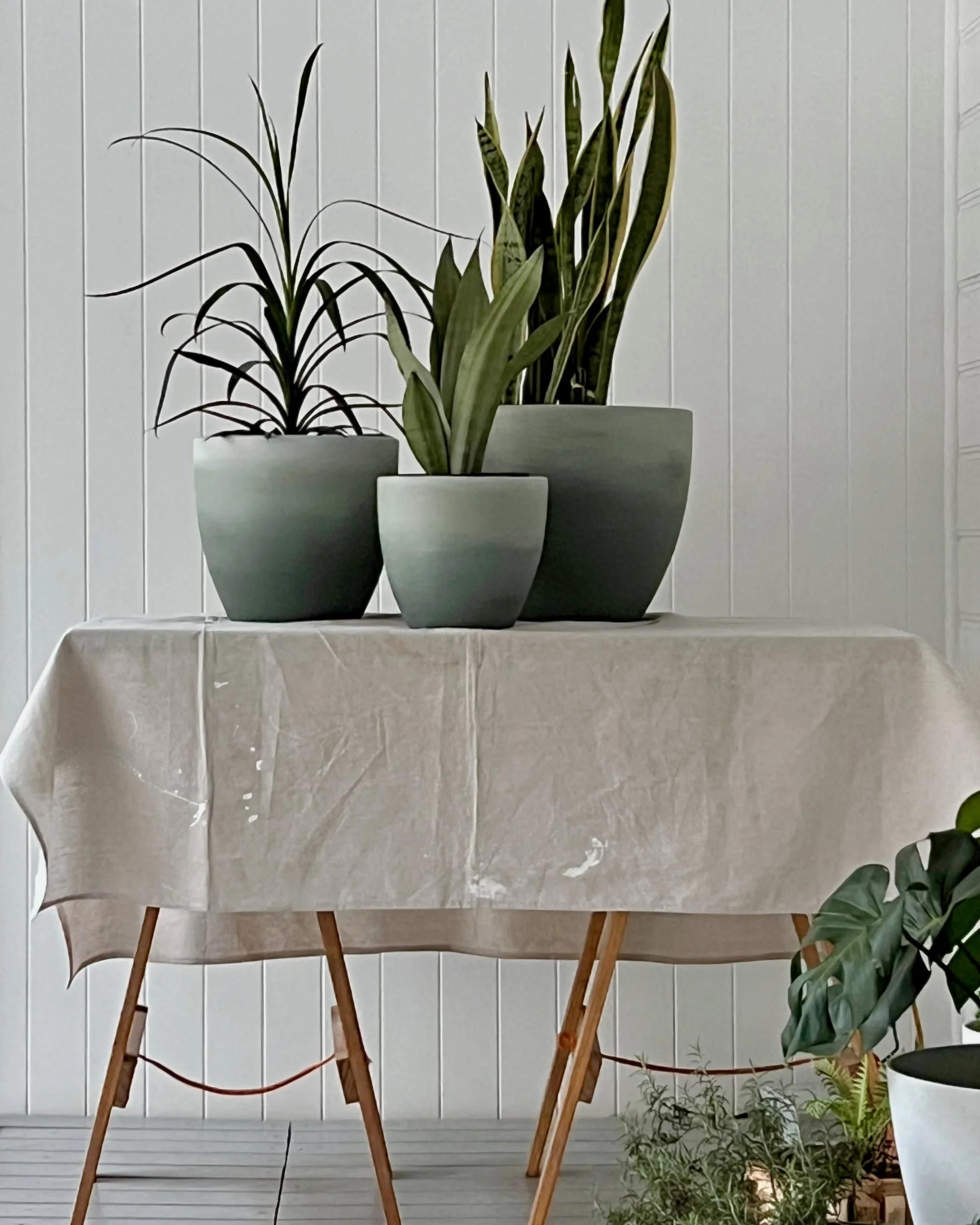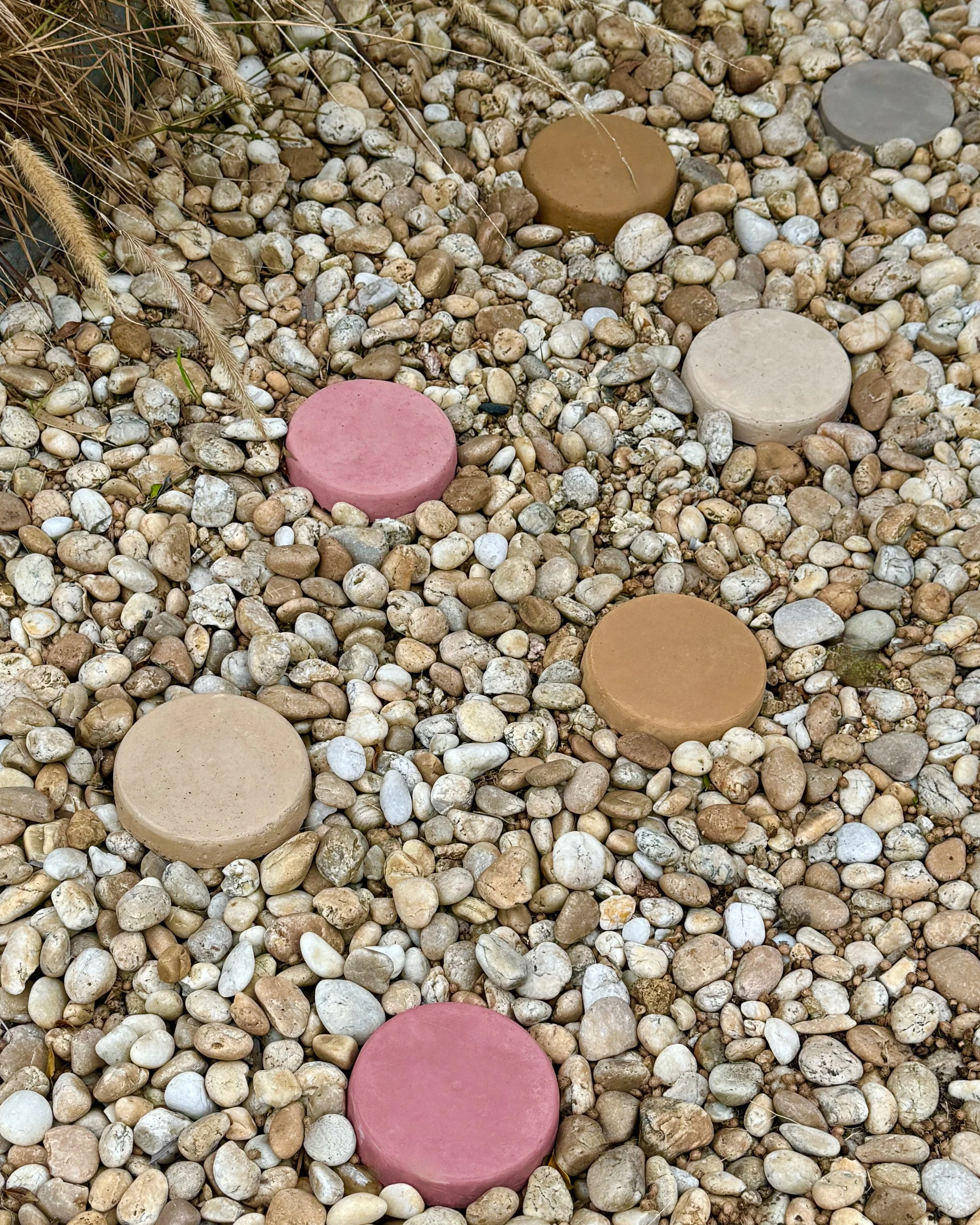VERSATILE TIMBER TRAY
Alun Machin
This is one tray to use many ways!
Set it up as a cooktop cover, use as an outdoor server, move it around as a work-from-home pod, add castors for a plant stand, attach low legs for a games table, or high legs for a mini desk…
Once you’ve mastered the back-to-basics build, simply adjust the dimensions and add features like feet and wheels to change the functionality.
Scroll to the end to see how to adapt the size and finish for a completely different look.
COOKTOP COVER
I initially made the tray to be positioned upside-down over the cooktop in my kitchen renovation.
The area for the coffee station is tight, so the extra bench space creates room to move when brewing, then lifts off for access to the stove for cooking.
TIP These instructions are for the cooktop cover. If you’re resizing, note that the bigger the heavier, so keep it less than 600mm square.
“I’ve designed the tray with ergonomic holes at the sides to make this fairly large piece easier to move.”
MOVEABLE TABLE
Adding legs converts to tray into a table and I’ve used it as games centre to keep a work-in-progress jigsaw contained.
These 400mm-high hairpins give it height to use as a coffee table while sitting on the floor or the sofa. The finger holds make it easy to move when playtime is over.
TIP You could add 700mm-high legs to make a movable mini desk. I bought everything at my local hardware store, including the hairpin legs, which come in various lengths.
OUTDOOR SERVER
I’ve made the tray from laminated timber panel, which is available from hardware stores in various species.
The merbau used here is a hardwood with a dark finish, so I matched it with sides made from meranti. The varnish seals it for using (or leaving) outdoors.
TIP If you choose a lighter timber, use Tasmanian oak for the sides in a similar size.
The tray is sealed with my favourite go-to, marine-grade Monocel Gold Exterior Wood Varnish in Clear, providing a hardy surface that handles spilt drinks and heavy objects without scratching.
TIP It’s designed for boats, so is UV-resistant and can be left outside. Just be sure to apply at least two even coats.
DIY MATERIALS
2.4m length 66mm x 18mm DAR meranti
120- and 180-grit abrasive paper with sanding block
Cloth
40mm countersunk timber screws
Timber filler with spatula in a tint to match the timber
Mini mohair roller with tray
DIY TOOLS
Tape measure and pencil
Drill with driver bit
19mm holesaw with arbour
Small trim router with round-over bit
Circular saw with straightedge
I cut the panel to 650mm wide x 580mm deep for the base with a circular saw, so it fits over the cooktop, allowing for the thickness of the sides (18mm each) with a bit of wiggle room.
From the meranti, using a mitre saw, I cut the front and back to 650mm long (same length as the base) and two sides to 544mm (to match the base minus 36mm, which is the combined thickness of the front and back).
TIP When measuring the cooktop, allow clearance around the edge and check the sides are high enough to avoid knocking the knobs and plates. For more height, swap the 66mm-wide timber for 91mm, which is the next standard size up.
To mark the centre hole on the sides, I measured halfway lengthways (272mm from the ends) and widthways (33mm from the edges). To set out the remaining holes I marked 40mm from either side of the centre mark.
TIP Use a measuring tape to double check the centre from both ends, then use a combination square to measure widthways, checking the mark is the same width from both edges, then tighten the square to transfer the measurement for other holes.
After setting up the drill with an arbour and 19mm holesaw, I clamped the side pieces over timber offcuts to protect the bench, positioned the arbour on the marks and drilled halfway through. Then I turned the pieces over, clamped and finished drilling from the other side.
TIP Hold the drill vertical, drilling from both sides to prevent the timber from breaking out. When purchasing a holesaw, check it has an arbour (the drill bit in the centre). If not, buy one separately or invest in a full set that can be used for other DIY projects such as holes for door handles.
One of my fave tools is a small trim router that I use for rounding over edges and to clean up around these holes. I rolled a small piece of 120-grit abrasive paper to sand inside the holes.
TIP If you don’t have a router, use the abrasive paper to round over the holes, holding it diagonally to sand both sides.
On the front and back pieces, I used the combination square to mark 10mm in from the ends and 15mm from the edges, then predrilled the holes with a combination countersinking bit.
TIP Clamp timber offcuts under the pieces when drilling to protect the bench.
To assemble the frame, I positioned the front and back against the sides. Working on one join at a time, I applied Bondall Bondcrete woodworking adhesive to the end grain and secured through the holes with 40mm timber screws, ensuring the heads sit below the surface.
TIP Wipe away excess adhesive with a damp cloth as soon as it appears to avoid sanding it off later.
To attach the base, I positioned it over the frame with the best side facing up and predrilled two holes at each corner, 65mm from the sides and 10mm in from the edges.
Along the front and back pieces I predrilled holes at the centre, 10mm in from the edge. I lifted off the base to run adhesive around the frame, then repositioned and secured with 40mm screws.
TIP If your tray is intended to be used right-side up, position the base on the frame with the best side facing down.
After wiping away excess adhesive with a damp cloth, I sanded away breakout with 180-grit abrasive paper and smoothed over the holes with timber filler, leaving to dry for an hour.
TIP Choose a filler tinted to match the timber, keeping in mind that it goes a little darker with the application of varnish.
I used the trimmer to round over all edges and sides, then sanded all over with 180-grit abrasive paper, removing any excess filler and any splinters along the sides. I wiped all over with a damp cloth to remove any dust.
TIP If you don’t have a trimmer, take the time to round over the edges and corners with 120-grit, then smooth over them again with 180-grit.
With the tray right-side up on offcuts to raise it off the bench, I applied a coat of Monocel Gold Exterior Wood Varnish in Clear around the inside, along the top and down the sides, dabbing into the holes with the tip of the mini mohair roller and smoothing away drips.
I left it to dry for two hours, flipped it over and sealed the base, leaving to dry overnight.
TIP Stir the varnish thoroughly before pouring into a mini tray, and use plastic wrap to seal the tray and roller between coats to prevent them drying out.
I lightly smoothed over the tray with 240-grit abrasive paper, wiped away dust with a damp cloth, then applied a second coat inside and out, leaving it to dry thoroughly. I applied a third coat over the base as an extra protective layer. If your tray is to be used right-side up, add a third coat to the inside.
TIP When finished, discard the roller cover but leave the tray to dry and simply peel off the dry varnish.
MOBILE STORAGE
Here’s another way of adapting the tray, resized to fit a case of 24 cans.
I cut a pine panel to 320mm x 460mm and added 64mm-wide pine sides. It’s finished in Monocel Stain & Varnish in Black for a more dramatic look, with castors so it can be moved around.
What would you use this sturdy timber tray for?
Tag me on your project and follow more of my DIY journey on Instagram for tool tips, home improvement and simple building projects.

